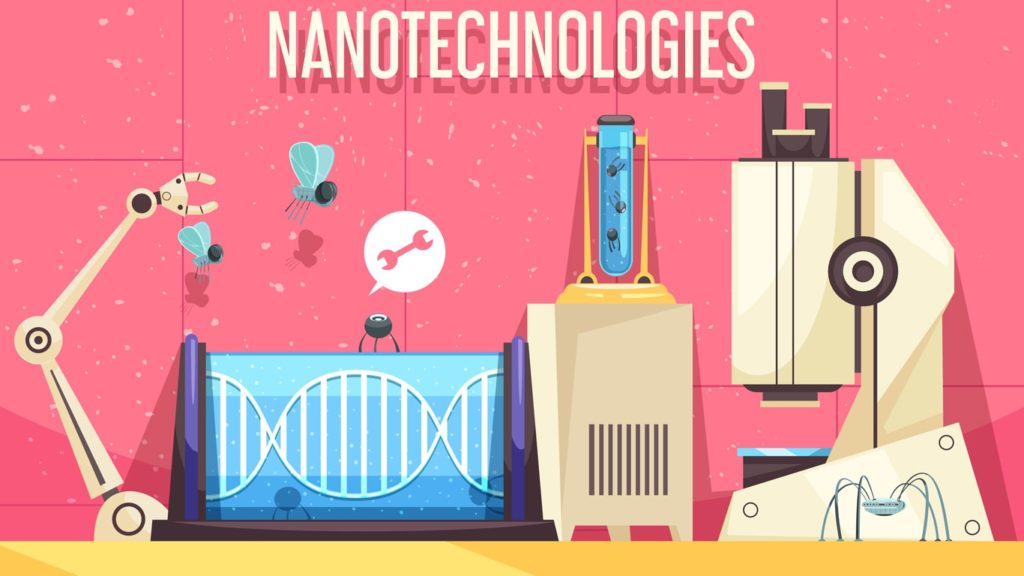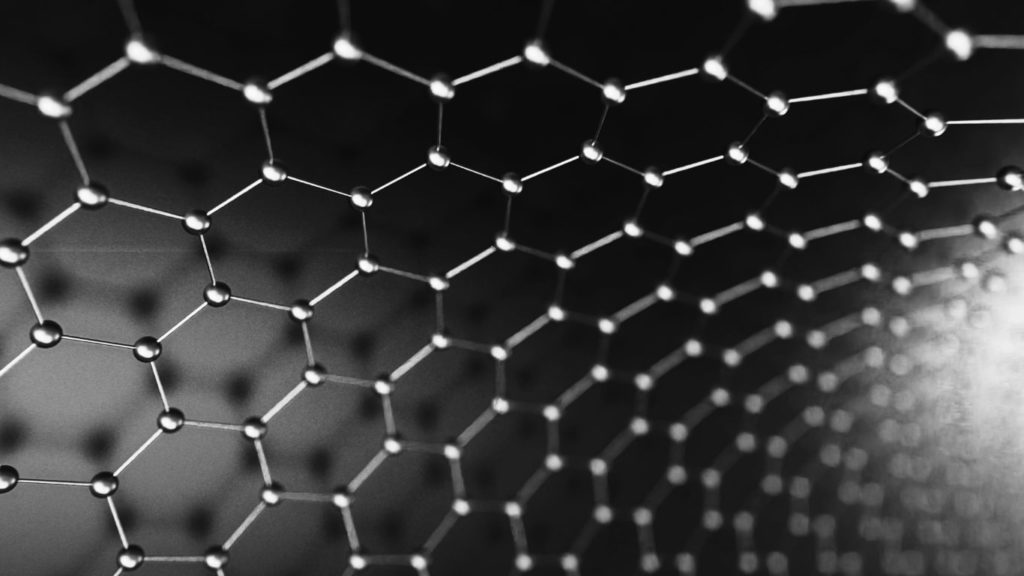
If there is one thing we realized since the introduction of modern technology, it’s that the size of materials or devices doesn’t determine their effectiveness. One thing led to the development of another, and that’s how we came to nanotechnology. What distinguishes nanotechnology from others is that it focuses on manufacturing smaller and lighter products that deliver the same results, if not better. Plus, since the size is reduced, the raw material requirements are, too.
Ultimately, this makes nanotechnology cost-effective. Now that we have laid out the gist of nanotechnology, let’s head towards its definition, examples, and application.
What is nanotechnology?
We will first cover the basics to help you understand what nanotechnology is. Do you know what is nanoscale? Nanoscale, also known as the nanoscopic scale, measures microscopic particles in nanometers or microns. A nanometer is the one-billionth part of a meter.
Consider the example of a red blood cell, which is about 7000 nm wide. The unusual emergence of materials at the nanoscale was the reason nanotechnology gained popularity.

Nanotechnology is the process of controlling shape and size at the nanoscale to design, characterize, and produce structures and systems that have a significant impact on our daily lives.
Examples of nanotechnology
Having covered the definition of nanotechnology, let’s look at its distinctive examples. These are the examples of nanotechnology:
1. Electronics
We need nanotechnology to maintain the contemporary pace of technological advancement. It allows the creation of faster, smaller, and portable systems. This results in increased capabilities and lesser power consumption.
The density of memory chips has increased significantly to store massive amounts of data and information. The transistors used in integrated circuits are made up of nanomaterials, too. A popular example of nanotechnology in electronics is a nanosensor that uses the properties of nanomaterials in the detection and measurement of events at the nanoscale.
2. Food security
Right from food manufacturing to packaging, nanotechnology offers value to secure food and maintain high quality. The nanosensors detect the changes in the storage environment that help to prevent food degradation.
These changes can be anything from microbial contamination to humidity to temperature. Even the changes in food color or gases produced when the food spoils are easily detected by sensors. Also, it is used to detect viruses, bacteria, parasites, harmful toxins, and chemicals that cause foodborne illness, overall improving food security.
3. Textile
Nanotechnology in the textile industry helps to engineer, synthesize, and alter materials to give them desired characteristics. These characteristics can be durability, high tensile strength, water repellence, and antimicrobial properties.
A swimming suit is one example where nanotechnology is used to repel water molecules. This has improved the performance of the swimmers, increasing their chances of victory. The other example is a body warmer that uses phase-changed materials (PCM). Basically, this clothing keeps you warm when you feel cold and keeps you cool when you feel hot.
4. Energy
In the energy sector, nanotechnology focuses on enhancing energy efficiency and leveraging renewable energy production. This is done in the form of building structures using nanomaterials that increase efficiency.
The windmill blades are one such example, where epoxy-containing carbon nanotubes are used. It makes the blades lighter and simultaneously stronger, which raises the amount of electricity they generate. Additionally, it has helped in the development of nanotech solar cells that are comparatively cheaper than conventional ones and used to generate electricity.
5. Cosmetics
Most of us use cosmetics products such as sunscreen, moisturizers, and make-up. But did you know nanoparticles are used in these products? In fact, nanotechnology is the reason these products feel lighter on our skin without a loss of effectiveness.
The nanoparticles are employed for UV filtering, too. An example is titanium dioxide and zinc oxide, both utilized in sunscreens to protect the skin from UV damage. The other usage of nanotechnology in cosmetics is delivering active ingredients to the skin cells. This prevents and/or treats hyperpigmentation and premature skin aging.
Nanotechnology: Shaping the fabric of our lives at the molecular level, where the smallest changes hold the promise to revolutionize the world.
Tech Quintal
Applications of nanotechnology
Now that we have gone over the diverse representatives of nanotechnology, it’s time to examine its application. The following are the applications of nanotechnology:
1. Nanotechnology increases the efficiency of the system in various sectors
Nanotechnology allows tailoring the structures of materials at the nanoscale to give them effective properties. It makes them lightweight, durable, reactive, and stronger. In clothing, it makes the fabric resistant to wrinkles and stains.
When nanoscale films are used on a screen they make it water-repellent, residue-repellent, scratch-resistant, and antimicrobial. Plus, it is used to develop next-generation flexible electronics that are also stretchable, foldable, and bendable. Additionally, nanotechnology is improving the efficiency of energy sources to meet the increasing energy demand of our world.
2. It reduces the cost of manufacturing and maintenance
We have experienced quite an improvement in the manufacturing process since the introduction of nanotechnology.
Firstly, it focuses on building smaller components, which ultimately, reduces the production costs. Secondly, nanotechnology helps detect, monitor, and repair cracks in structures saving maintenance costs significantly. Lastly, researchers are working towards developing affordable ways to make nanomaterials that will accelerate the pace of advancement.
3. Produces solutions for disease prevention, diagnosis, and treatment
For the early diagnosis of medical conditions, nanotechnology is used to develop better imaging and diagnostics tools. It is also used to develop personalized treatment options for improving the patient’s recovery rate.
Currently, chemotherapy is utilized to treat cancer, but it has its own set of drawbacks. Now just imagine if we can use nanotechnology instead, how beneficial it would be? It will help deliver medications to the affected cancer cells directly, which will diminish the damage caused to healthy tissue.
4. Detects and cleans environmental contaminants
Nanotechnology simplifies the process of detecting contaminants. Be it clean water for drinking or water pollutants in groundwater, nanotechnology is used to treat impurities in water and render pollutants harmless. It not only saves energy, water, and raw materials but also reduces greenhouse gases. It increases the durability of the materials, which boosts their lifespan while eliminating the need for replacement.
Plus, it makes materials dust-free, which further lessens the cleaning efforts and usage of cleaning agents. Although nanotechnology is in the development phase, it has the potential to improve our lives immensely.
FAQs About Nanotechnology
A nanometer (nm) is one billionth of a meter. To put it in perspective, a single sheet of paper is about 100,000 nanometers thick (in most cases).
Nanotechnology has a wide range of applications including medicine (targeted drug delivery systems, diagnostics), electronics (transistors, quantum computers), energy (solar cells, batteries), and materials science (stronger and lighter materials).
The safety of nanotechnology depends on specific materials and applications. While many nanomaterials are considered safe, of course, there are concerns about potential health and environmental impacts.
Yes. There are numerous products on the market that incorporate nanotechnology. These products range from cosmetics and clothing with enhanced properties, to medical devices and water filtration systems. But, nothing like the Iron Man’s suits.
Nanotechnology will definitely revolutionize medicine with targeted drug delivery systems. Also, nano-sized robots that can perform micro-surgeries, and sensors that can detect diseases at very early stages. In the future, this technology will only get better at finding, analyzing, and curing diseases.
The future of nanotechnology is expected to bring advancements in several fields, including personalized medicine, sustainable energy solutions, and advanced computing systems. It’s also likely to enable new capabilities we have yet to imagine.
Entering the nanotechnology field typically requires education in nanoscience or nanotechnology. These fields can be pursued at various levels from undergraduate to doctoral studies. In addition, fields like physics, chemistry, biology, and engineering all intersect with nanotechnology research and application.
Like any powerful technology, nanotechnology also raises ethical concerns, including issues regarding privacy (due to tiny surveillance devices), enhancement (in the case of human performance), and social disparity (due to unequal access to technology).